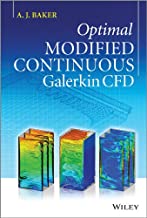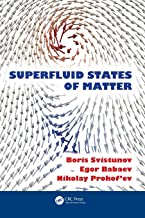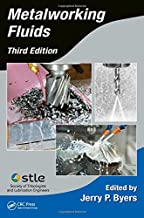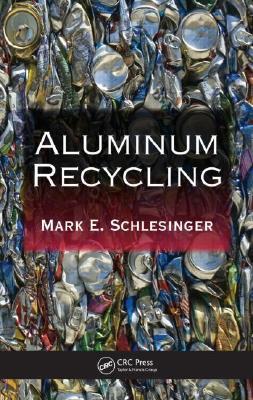Optimal Modified Continuous Galerkin CFD
Original price was: ₹13,645.10.₹10,916.08Current price is: ₹10,916.08.
ISBN: 9781119940494
Author/Editor: A.J. Baker
Publisher: John Wiley
Year: 2014
1 in stock (can be backordered)
Description
Covers the theory and applications of using weak form theory in incompressible fluid-thermal sciences Giving you a solid foundation on the Galerkin finite-element method (FEM), this book promotes the use of optimal modified continuous Galerkin weak form theory to generate discrete approximate solutions to incompressible-thermal Navier-Stokes equations. The book covers the topic comprehensively by introducing formulations, theory and implementation of FEM and various flow formulations. The author first introduces concepts, terminology and methodology related to the topic before covering topics including aerodynamics; the Navier-Stokes Equations; vector field theory implementations and large eddy simulation formulations.
* Introduces and addresses many different flow models (Navier-Stokes, full-potential, potential, compressible/incompressible) from a unified perspective * Focuses on Galerkin methods for CFD beneficial for engineering graduate students and engineering professionals * Accompanied by a website with sample applications of the algorithms and example problems and solutions This approach is useful for graduate students in various engineering fields and as well as professional engineers.
Additional information
| Weight | 1.03 kg |
|---|
Product Properties
| Year of Publication | 2014 |
|---|---|
| Table of Contents | Preface xiii About the Author xvii Notations xix 1 Introduction 1 1.1 About This Book 1 1.2 The Navier Stokes Conservation Principles System 2 1.3 Navier Stokes PDE System Manipulations 5 1.4 Weak Form Overview 7 1.5 A Brief History of Finite Element CFD 9 1.6 A Brief Summary 11 References 12 2 Concepts, terminology, methodology 15 2.1 Overview 15 2.2 Steady DE Weak Form Completion 16 2.3 Steady DE GWSN Discrete FE Implementation 19 2.4 PDE Solutions, Classical Concepts 27 2.5 The Sturm Liouville Equation, Orthogonality, Completeness 30 2.6 Classical Variational Calculus 33 2.7 Variational Calculus, Weak Form Duality 36 2.8 Quadratic Forms, Norms, Error Estimation 38 2.9 Theory Illustrations for Non-Smooth, Nonlinear Data 40 2.10 Matrix Algebra, Notation 44 2.11 Equation Solving, Linear Algebra 46 2.12 Krylov Sparse Matrix Solver Methodology 53 2.13 Summary 54 Exercises 54 References 56 3 Aerodynamics I: Potential flow, GWSh theory exposition, transonic flow mPDE shock capturing 59 3.1 Aerodynamics, Weak Interaction 59 3.2 Navier Stokes Manipulations for Aerodynamics 60 3.3 Steady Potential Flow GWS 62 3.4 Accuracy, Convergence, Mathematical Preliminaries 66 3.5 Accuracy, Galerkin Weak Form Optimality 68 3.6 Accuracy, GWSh Error Bound 71 3.7 Accuracy, GWSh Asymptotic Convergence 73 3.8 GWSh Natural Coordinate FE Basis Matrices 76 3.9 GWSh Tensor Product FE Basis Matrices 82 3.10 GWSh Comparison with Laplacian FD and FV Stencils 87 3.11 Post-Processing Pressure Distributions 90 3.12 Transonic Potential Flow, Shock Capturing 92 3.13 Summary 96 Exercises 98 References 99 4 Aerodynamics II: boundary layers, turbulence closure modeling, parabolic Navier Stokes 101 4.1 Aerodynamics, Weak Interaction Reprise 101 4.2 Navier Stokes PDE System Reynolds Ordered 102 4.3 GWSh, n= 2 Laminar-Thermal Boundary Layer 104 4.4 GWSh + TS BL Matrix Iteration Algorithm 108 4.5 Accuracy, Convergence, Optimal Mesh Solutions 111 4.6 GWSh + TS Solution Optimality, Data Influence 115 4.7 Time Averaged NS, Turbulent BL Formulation 116 4.8 Turbulent BL GWSh+ TS, Accuracy, Convergence 120 4.9 GWSh+ TS BL Algorithm, TKE Closure Models 123 4.10 The Parabolic Navier Stokes PDE System 129 4.11 GWSh + TS Algorithm for PNS PDE System 134 4.12 GWSh + TS k=1 NC Basis PNS Algorithm 137 4.13 Weak Interaction PNS Algorithm Validation 141 4.14 Square Duct PNS Algorithm Validation 147 4.15 Summary 148 Exercises 155 References 157 5 The Navier Stokes Equations: theoretical fundamentals; constraint, spectral analyses, mPDE theory, optimal Galerkin weak forms 159 5.1 The Incompressible Navier Stokes PDE System 159 5.2 Continuity Constraint, Exact Enforcement 160 5.3 Continuity Constraint, Inexact Enforcement 164 5.4 The CCM Pressure Projection Algorithm 166 5.5 Convective Transport, Phase Velocity 168 5.6 Convection-Diffusion, Phase Speed Characterization 170 5.7 Theory for Optimal mGWSh+ TS Phase Accuracy 177 5.8 Optimally Phase Accurate mGWSh + TS in n Dimensions 185 5.9 Theory for Optimal mGWSh Asymptotic Convergence 193 5.10 The Optimal mGWSh TS k 1 Basis NS Algorithm 201 5.11 Summary 203 Exercises 206 References 208 6 Vector Field Theory Implementations: vorticity-streamfunction, vorticity-velocity formulations 211 6.1 Vector Field Theory NS PDE Manipulations 211 6.2 Vorticity-Streamfunction PDE System, n= 2 213 6.3 Vorticity-Streamfunction mGWSh Algorithm 214 6.4 Weak Form Theory Verification, GWSh/mGWSh 219 6.5 Vorticity-Velocity mGWSh Algorithm, n= 3 228 6.6 Vorticity-Velocity GWSh+ TS Assessments, n= 3 233 6.7 Summary 243 Exercises 246 References 247 7 Classic State Variable Formulations: GWS/mGWSh+ TS algorithms for Navier Stokes; accuracy, convergence, validation, BCs, radiation, ALE formulation 249 7.1 Classic State Variable Navier Stokes PDE System 249 7.2 NS Classic State Variable mPDE System 251 7.3 NS Classic State Variable mGWSh+ TS Algorithm 252 7.4 NS mGWSh + TS Algorithm Discrete Formation 254 7.5 mGWSh+ TS Algorithm Completion 258 7.6 mGWSh+ TS Algorithm Benchmarks, n=2 260 7.7 mGWSh+ TS Algorithm Validations, n= 3 268 7.8 Flow Bifurcation, Multiple Outflow Pressure BCs 282 7.9 Convection/Radiation BCs in GWSh+ TS 283 7.10 Convection BCs Validation 288 7.11 Radiosity, GWSh Algorithm 295 7.12 Radiosity BC, Accuracy, Convergence, Validation 298 7.13 ALE Thermo-Solid-Fluid-Mass Transport Algorithm 302 7.14 ALE GWSh + TS Algorithm LISI Validation 304 7.15 Summary 310 Exercises 317 References 318 8 Time Averaged Navier Stokes: mGWSh+ TS algorithm for RaNS, Reynolds stress tensor closure models 319 8.1 Classic State Variable RaNS PDE System 319 8.2 RaNS PDE System Turbulence Closure 321 8.3 RaNS State Variable mPDE System 323 8.4 RaNS mGWSh+ TS Algorithm Matrix Statement 325 8.5 RaNS mGWSh + TS Algorithm, Stability, Accuracy 331 8.6 RaNS Algorithm BCs for Conjugate Heat Transfer 337 8.7 RaNS Full Reynolds Stress Closure PDE System 341 8.8 RSM Closure mGWSh + TS Algorithm 345 8.9 RSM Closure Model Validation 347 8.10 Geologic Borehole Conjugate Heat Transfer 348 8.11 Summary 358 Exercises 363 References 364 9 Space Filtered Navier Stokes: GWSh/mGWSh+ TS for space filtered Navier Stokes, modeled, analytical closure 365 9.1 Classic State Variable LES PDE System 365 9.2 Space Filtered NS PDE System 366 9.3 SGS Tensor Closure Modeling for LES 368 9.4 Rational LES Theory Predictions 371 9.5 RLES Unresolved Scale SFS Tensor Models 376 9.6 Analytical SFS Tensor/Vector Closures 381 9.7 Auxiliary Problem Resolution Via Perturbation Theory 383 9.8 LES Analytical Closure (arLES) Theory 386 9.9 arLES Theory mGWSh + TS Algorithm 387 9.10 arLES Theory mGWSh + TS Completion 391 9.11 arLES Theory Implementation Diagnostics 392 9.12 RLES Theory Turbulent BL Validation 403 9.13 Space Filtered NS PDE System on Bounded Domains 409 9.14 Space Filtered NS Bounded Domain BCs 410 9.15 ADBC Algorithm Validation, Space Filtered DE 412 9.16 arLES Theory Resolved Scale BCE Integrals 420 9.17 Turbulent Resolved Scale Velocity BC Optimal h- 423 9.18 Resolved Scale Velocity DBC Validation 8 Re 430 9.19 arLES O( 2) State Variable Bounded Domain BCs 430 9.20 Well-Posed arLES Theory n = 3 Validation 433 9.21 Well-Posed arLES Theory n = 3 Diagnostics 441 9.22 Summary 446 Exercises 455 References 456 10 Summary-VVUQ: verification, validation, uncertainty quantification 459 10.1 Beyond Colorful Fluid Dynamics 459 10.2 Observations on Computational Reliability 460 10.3 Solving the Equations Right 461 10.4 Solving the Right Equations 464 10.5 Solving the Right Equations Without Modeling 466 10.6 Solving the Right Equations Well-Posed 468 10.7 Well-Posed Right Equations Optimal CFD 471 10.8 The Right Closing Caveat 473 References 474 Appendix A: Well-Posed arLES Theory PICMSS Template 475 Appendix B: Hypersonic Parabolic Navier Stokes 483 B.1 High Speed External Aerodynamics 483 B.2 Compressible Navier Stokes PDE System 484 B.3 Parabolic Compressible RaNS PDE System 488 B.4 Compressible PRaNS mPDE System Closure 490 B.5 Bow Shock Fitting, PRaNS State Variable IC 493 B.6 The PRaNS mGWSh+ TS Algorithm 496 B.7 PRaNS mGWSh+ TS Algorithm Completion 501 B.8 PRaNS Algorithm IC Generation 505 B.9 PRaNS mGWSh+ TS Algorithm Validation 507 B.10 Hypersonic Blunt Body Shock Trajectory 515 B.11 Shock Trajectory Characteristics Algorithm 521 B.12 Blunt Body PRaNS Algorithm Validation 523 B.13 Summary 527 Exercises 532 References 533 Author Index 535 Subject Index 541 |
| Author | A.J. Baker |
| ISBN/ISSN | 9781119940494 |
| Binding | Hardback |
| Edition | 1 |
| Publisher | John Wiley |
You must be logged in to post a review.






Reviews
There are no reviews yet.